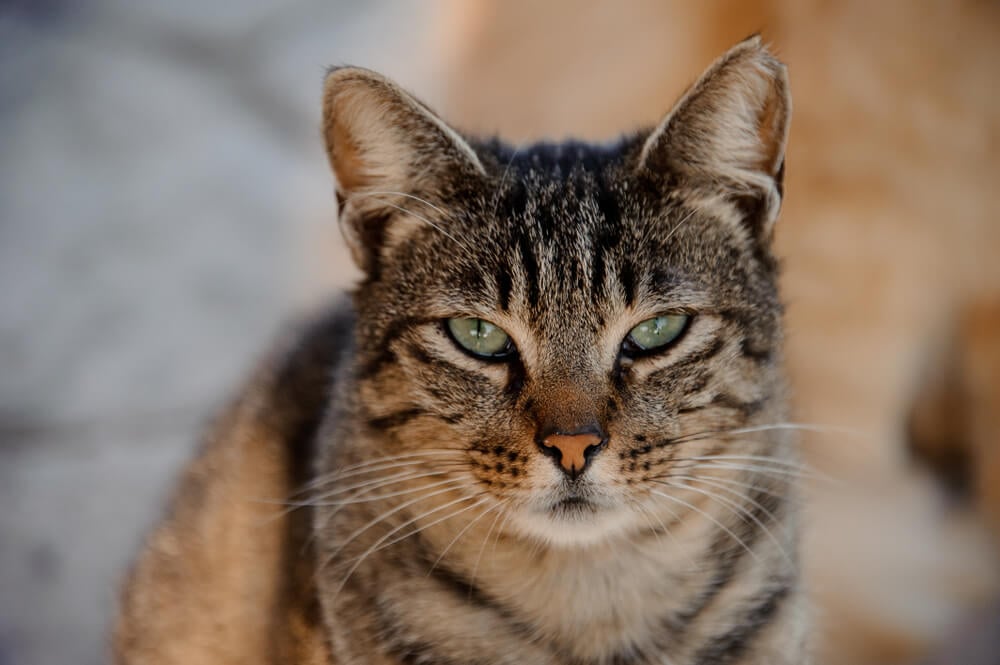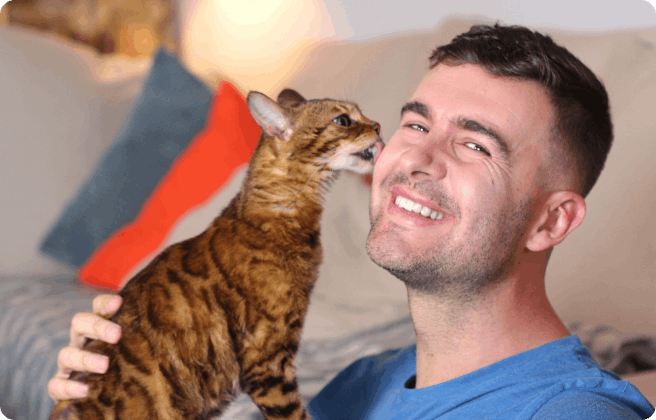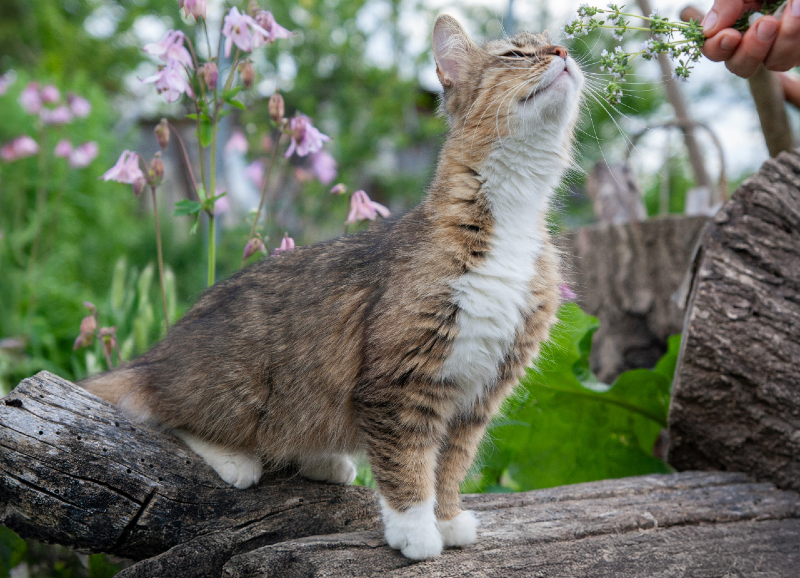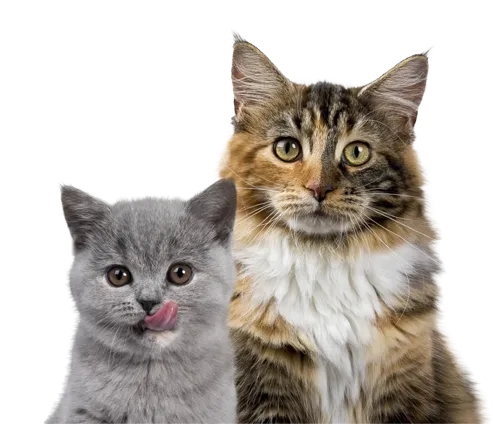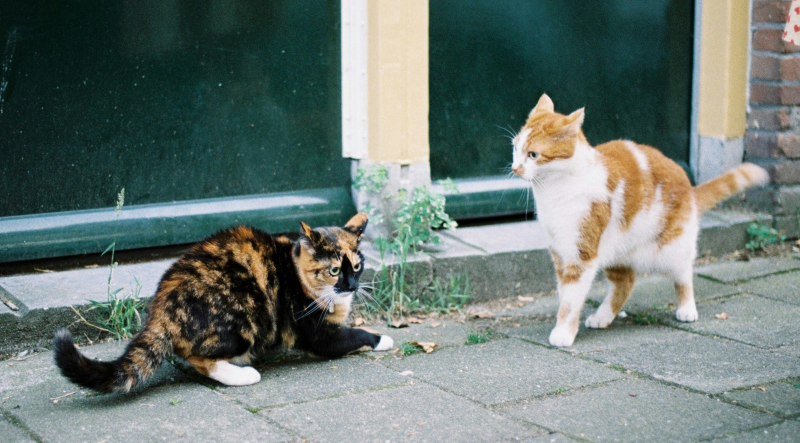
The core of human communication is undoubtedly speech. We also rely on body language, gestures, facial expressions, and touch. However, we generally don’t communicate through scent. I’d imagine you’d get some strange looks if you had a sniff of the neighbor or started urinating outside of the bathroom. That’s why some of our cats’ behaviors can be a little confusing.
Take urine spraying, for example. No pet parent wants their cat marking the sofa or walls instead of the litter box (especially since that smell can linger).
Why do cats do this? Most likely, they’re marking their territory. So, to help you understand this behavior, we’ve written an article on how cats mark their territory, why they do this, and how to stop them.
Why do cats mark their territory?
Cats are territorial animals, they mark their territory for survival. Generally, these ‘messages’ are used to avoid unnecessary or unexpected meetings — your cat is saying, “this area is mine.” This behavior helps them establish boundaries, signal mating availability, and even cope with stress.
Even though domesticated cats live in comfortable homes, they still retain this instinctual behavior. Marking helps them feel secure in their environment and is particularly common when they experience changes, such as moving to a new home or the introduction of a new pet.
How do male cats mark their territory?
While female cats mark their territory too, it’s most common among unneutered male cats. Marking behavior typically begins when a cat reaches reproductive maturity around five to six months of age.
One of the most common marking behaviors is spraying, where a cat backs up to a vertical surface with their tail raised and releases a spray of urine. This allows male cats to alert others that the area is already claimed. Additionally, unspayed female cats may spray to signal their availability for mating. Both male and female cats can also mark when they feel stressed or threatened.
Female cats marking their territory
Although marking behavior is more common in male cats, females can also engage in it. Unspayed females in heat may spray urine as a way of attracting potential mates. Additionally, if your female cat is experiencing stress, such as after a move, a new pet introduction, or other environmental changes, she may mark her territory to reassert her sense of security.
How do you tell the difference between marking and peeing cats?
You can distinguish normal urinating from spraying as spraying is typically done on vertical surfaces, such as walls, furniture, or doors, and is usually accompanied by tail quivering. Regular urination, in contrast, is performed squatting over a horizontal surface like a litter box, bed, or carpet.
Distinguishing between marking and peeing can help cat parents address the behavior appropriately. If your cat is urinating outside the litter box, check the surface:
- If urine is found on a horizontal surface (floor, bed, blanket), it is likely a case of inappropriate urination.
- If urine is found on a vertical surface (walls, cabinets, door frames), your cat is spraying to mark territory.
How do cats choose where to pee?
Cats prefer quiet, safe areas to urinate. If they are marking, they tend to choose prominent locations like doorways, furniture, or walls where their scent can be easily detected by other animals.
How long does cat scent marking last?
The duration of a cat’s scent depends on factors such as the environment and cleaning methods. If not cleaned properly, the scent can last for months, encouraging repeat marking.
How do I stop my cat from marking their territory?
Provide a safe space for your cat
Cats are territorial animals, and they may feel the need to mark if they feel threatened or insecure in their environment. Providing a safe, quiet space with their own bed, scratching post, and toys can help reduce their stress and make them feel more secure. If you have multiple cats, ensure each one has their own resources to avoid competition.
Clean locations where they have already sprayed
Once your cat has marked a spot, they may continue spraying the same area unless it’s properly cleaned. Use an enzymatic cleaner specifically designed for pet urine to remove the scent completely.
Consider spaying or neutering
Spaying and neutering cats before sexual maturity (around six months old) can prevent about 90% of marking problems. About 10% of cats will continue marking, or simulate marking without actually spraying urine, despite being spayed or neutered. This often happens in multi-cat households due to territorial disputes or if an outdoor cat is spraying nearby, triggering an indoor cat to mark their space in response. Marking behavior may also increase during stressful situations, such as when a new pet is introduced or changes occur in the household. In rare cases, some cats may even deposit stool as part of their marking behavior.
Manage your cat’s anxiety
Stress and anxiety are common triggers for marking behavior. If your cat is feeling unsettled, take steps to reduce their stress. Some helpful strategies include:
- Using pheromone diffusers (such as Feliway) to create a calming environment.
- Maintaining a consistent routine for feeding, playtime, and interaction.
- Provide vertical spaces like cat trees or shelves where they can observe their surroundings from a safe distance.
- Introducing new pets slowly by keeping them separated at first and gradually allowing them to interact under supervision.
If your cat continues marking despite these interventions, consult a veterinarian or animal behaviorist to rule out medical issues or explore other behavioral solutions.
We uphold the highest editorial standards when creating the authoritative content pet parents rely on and trust.
Every piece of clinical content on the Cat Food Advisor is reviewed by our certified Veterinary Advisory Board, which consists of licensed veterinarians and medically certified specialists.
Our reviews are completely independent; we are not paid by any pet food company to promote their products favorably. We do not accept money, gifts, samples or other incentives in exchange for special consideration. For more information see our Disclaimer & Disclosure page.




